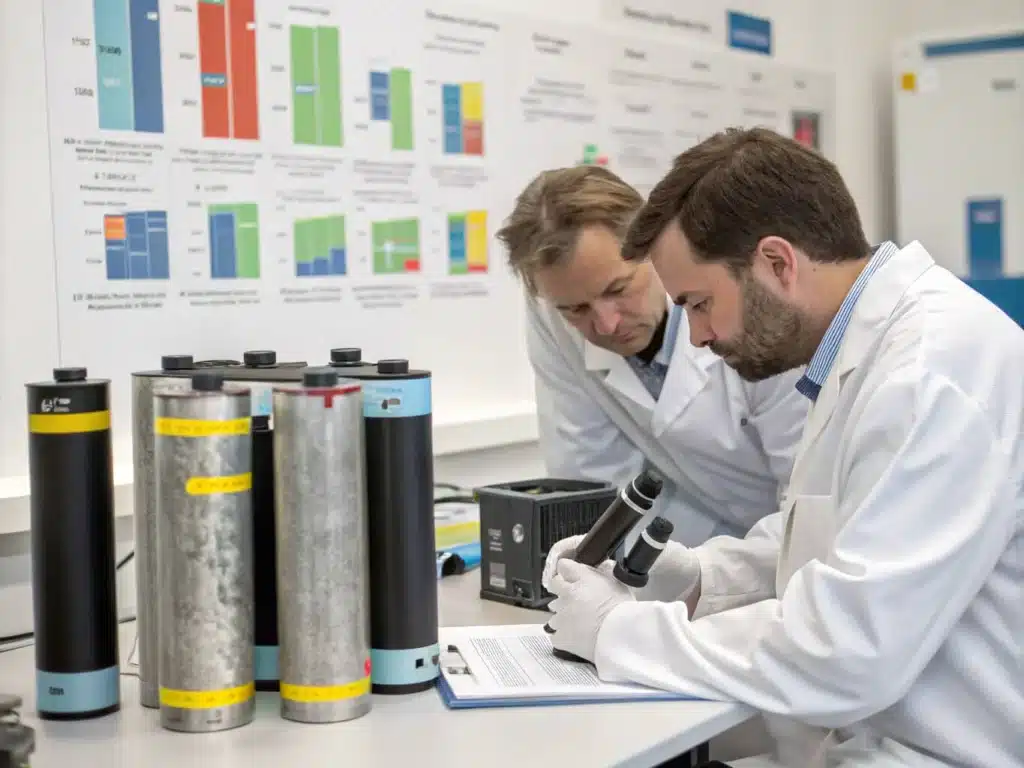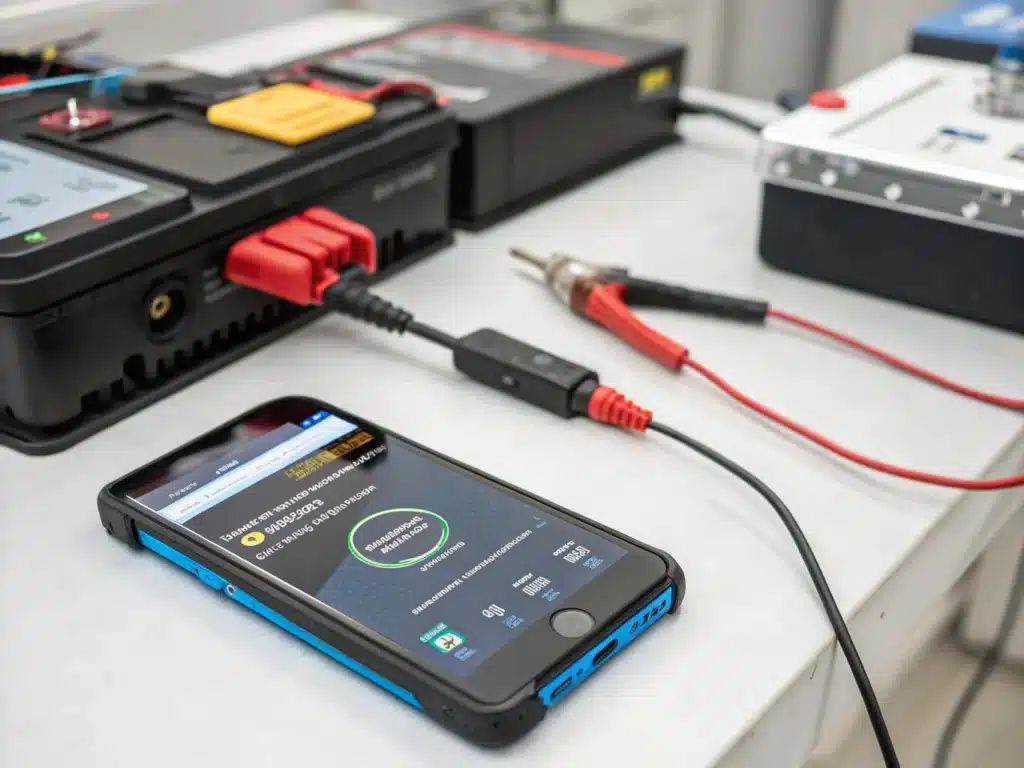Have you ever encountered these situations? Your laptop battery suddenly stopped responding, or your power tool battery that you have used for a long time cannot be charged. Isn’t it a headache? This article is to explore why your lithium battery will appear “fake dead” (completely no output) or “cannot be charged”, analyze the possible reasons, and introduce some potential diagnosis and repair methods.
Table of Contents
ToggleHow to tell if your battery is dead
Lithium batteries store and release energy through the movement of lithium ions between positive and negative electrodes to power your devices. Modern lithium battery packs are almost always equipped with a battery management system, whose core function is to monitor and protect battery cells. Because many “battery failure” symptoms may actually be active actions taken by the BMS for protection purposes, such as entering a “lock” or “sleep” mode after a deep over-discharge, resulting in the battery temporarily having no voltage output or being unable to respond to the charger.

Analysis of common battery failure causes
Understanding the potential causes below will help you better identify dead battery symptoms and evaluate the next steps to take.
Deep over discharge. This is one of the most common reasons, especially after the device has been idle for a long time without charging. When the battery voltage drops to a very low level, the BMS may activate the over discharge protection, cut off the output and prevent regular charging to prevent irreversible damage to the battery cell.
BMS failure. The battery management system itself may also fail. Damaged electronics, circuit board problems, or programming errors can prevent the BMS from functioning properly.
The battery cell is physically damaged or aged. This is the most serious and usually unrepairable situation. It includes: physical damage, bulging, leakage, severe aging, etc.
Charger or device problem. The problem may not be with the battery itself. Please check first: Is the charger working properly? Is the charging cable damaged? Is the power outlet powered? Is the device that the battery is used in itself faulty, causing it to not recognize the battery or not charge? Eliminating these external factors is the first step in diagnosis.
Poor contact. The metal contacts (connectors) between the battery and the device may be poor due to oxidation, dirt, debris, or physical deformation.
Diagnose your battery
When operating, be sure to operate in a well-ventilated area and away from flammable items. Wear goggles and insulating gloves. It is best to have a fire extinguisher on hand just in case.
Before diagnosis, it is best to prepare a multimeter. The following are the specific diagnostic steps:

The first step is to check the appearance. Check if the battery is obviously bulging, leaking, the shell is damaged or hit, and the metal interface is rusted or corroded. If you see any of these serious physical problems, you must stop immediately, as it is likely that you cannot repair it.
Step 2: Measure the voltage. Adjust the meter to the correct DC voltage setting and then safely touch the meter probes to the main positive (+) and negative (-) output terminals of the battery.
Step 3: Understand the voltage. If the reading is 0V, it very likely means that the BMS has activated protection and locked the output because the battery is exhausted. In this case, the success rate of waking up the battery later is relatively high. Low voltage (but not 0V): If the voltage is lower than the normal operating voltage of the battery, this indicates that the battery may be in a deep discharge state (perhaps the BMS has not been completely locked), or the battery cell has aged and its performance has seriously degraded. Normal voltage: If the battery shows a normal voltage, but the device still does not work or cannot be charged, then the problem is most likely a malfunction of the BMS itself (although it has power, it cannot manage charging and discharging normally), or a problem with the charger/power device, or simply a poor contact.
Step 4: Eliminate external causes and check whether the charger is normal.
How to fix dead battery
You may have already determined what the problem with your battery may be by inspection and measurement. Now it is time to give specific methods to try for some of the possible fixes.

Specially designed for BMS over-discharge protection wake-up
This is the most common dead situation, that is, the voltage measured by the above part is 0V or very low. It is likely that the BMS is locked to protect the battery cell. We recommend using a smart charger with a 0V charging start function, charging with a small current of 0.1C to activate the battery.
Dealing with poor contact
This is a relatively simple one, mainly for the above diagnosis that the contact points may be dirty or loose. We recommend that you use an eraser or cotton swab dipped in alcohol to gently wipe the metal contact points on the battery and device to remove the oxide layer or dirt.
DC power pre-charge
This method is very risky and is only suitable for professionals who are familiar with lithium batteries. Use an adjustable DC regulated power supply, set to constant current (CC) mode, and a very small current. The voltage limit should be set slightly higher than the minimum safe voltage of a single string of cells. The entire process needs to monitor the voltage changes and temperature of the battery. If any abnormality is found, such as battery heating or smelling a strange smell, it must be stopped immediately.
No matter which method you use, you should stop immediately if you encounter these situations. If the battery has any physical damage, the battery is obviously hot, smoking, or has a strange smell. You have tried many times, but it still doesn’t work.
Alternatives and prevention
If the above repairs still don’t work, you need to accept the fact that the battery is damaged. There is a short circuit inside the battery, the material is aged, or there is severe physical damage. These situations usually cannot be repaired by simple methods. You can try the following alternatives.
Buy new replacement batteries. We strongly recommend that you buy original official batteries first, or choose third-party brand batteries with good reputation and guaranteed quality. For example, we at Hongyitai have been specializing in lithium battery production for more than 10 years.
Find a professional repair service. For some larger or more complex battery packs, you can try to find a professional battery repair service.
Consider device upgrades: Sometimes, if the device that supports the battery is old, it may be a wiser choice to directly upgrade the entire device instead of just worrying about replacing the battery.
It is also important to properly and safely maintain the battery. You need to pay attention to the following points. Avoid over-discharging the battery, charge it correctly, store it appropriately, avoid extreme temperatures, and pay attention to physical protection. Let your battery last longer.
Conclusion
This article will show you how to diagnose battery problems and possible repair methods. However, trying to repair the battery is risky and there is no guarantee of success. The most reliable way is to directly replace it with a new, quality-guaranteed battery. You can also contact us for professional help.
FAQs
Whether a battery can be 100% restored depends on the extent of its damage. For batteries that are slightly damaged (such as deeply discharged or sulfated), reconditioning may be effective and battery performance can be gradually restored. However, for batteries that are physically damaged, extremely aged, or otherwise non-repairable, reconditioning may not be able to fully restore their original capacity and performance.
If the battery's capacity continues to decrease, it is unstable when charging, or it loses power quickly in a short period of time, these may be signs of battery aging. You can judge the health of the battery by the number of times it is charged and discharged. Generally, the capacity of the battery will be significantly reduced after 500 charge and discharge cycles. This state cannot be restored to its original performance.
When choosing a battery reconditioner, first make sure it is compatible with your battery type (lead-acid, lithium, or NiMH). A high-quality reconditioner should have the following features:
Safety certification: such as ISO9001 and UL certification to ensure the safety of the equipment.
Multiple repair modes: There are different repair modes for different battery types.
Ease of use: simple operation interface and clear guidance of the repair process.
Repair effect: Choose a brand with good reputation and technical support to ensure the repair effect and after-sales service.
Avoid excessive temperatures: Avoid overheating that may damage the battery or pose a safety risk.
Avoid direct contact with heating sources: Do not place the battery directly on a heater or heat source. It is best to let the battery warm up naturally at room temperature.
Monitor temperature: Make sure the battery temperature is within a safe range (usually between 20°C and 25°C). Overheating may damage the battery's internal structure.
